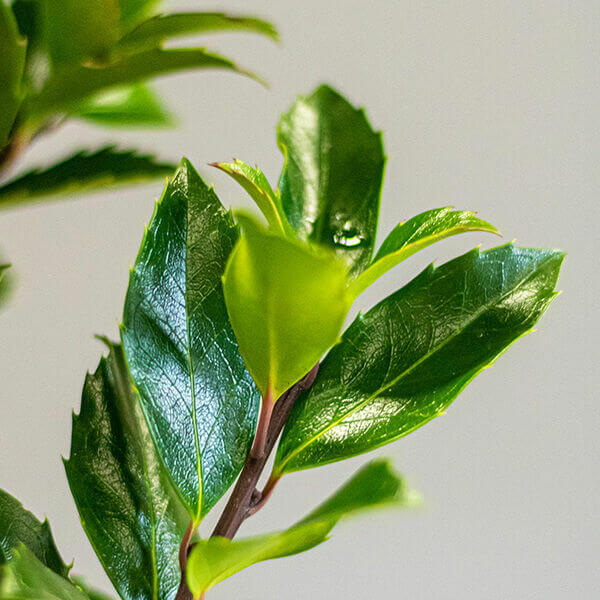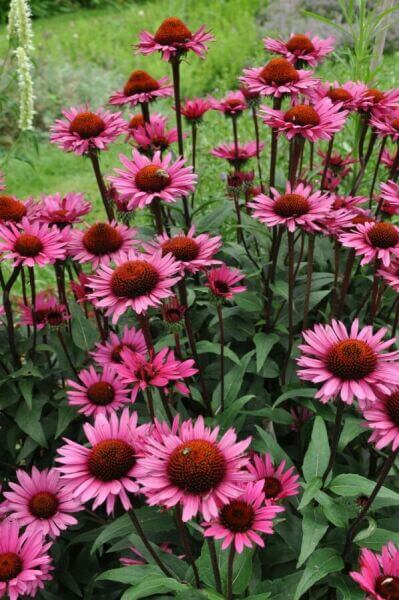Hedge Plants For Artistic Borders
Enhance your garden's attraction with lavish hedge ranges such as Yew (Taxus), Thuja, Laurel, Photinia, and Bamboo, commemorated for their structural integrity and ecological benefits.
Yew and Thuja offer evergreen protection and winter durability, while Laurel uses rapid development and broad, fragrant leaves.
Photinia includes seasonal appeal with its lively red foliage, and Bamboo provides a low-maintenance, tranquil ambiance.
These hedges enhance air quality, reduce noise, and create tranquil, private spaces.
Correct planting, spacing, and upkeep ensure energetic development and environmental harmony.
Explore how these lavish varieties can elevate your garden's beauty and well-being.
Secret Takeaways
Transform Your Garden With Lush Hedge Varieties
- Select Yew for its dense, evergreen development and unequaled durability.
- Choose Laurel for its fast development and broad leaves, making sure fast privacy.
- Choose Photinia for its dynamic seasonal foliage, which turns a striking dark red.
- Use Bamboo for a low-maintenance, winter-hardy hedge with visual appeal.
- Area plants 2-3 per meter and prune routinely for ideal development and health.
Popular Hedge Plants
When changing a garden with lavish hedge ranges, it's vital to think about popular hedge plants such as Yew, Thuja, Laurel, and Photinia due to their special characteristics and benefits.
Yew (Taxus) is extremely respected for its durability and dense, green development, making it a prime option for sustaining landscapes.
Thuja is kept in mind for its evergreen foliage and robust winter resilience.
Photinia adds seasonal vibrancy with red leaves that darken in time, producing dynamic visual appeal.
Laurel provides rapid development and aromatic, broad leaves, ideal for fast privacy.
Additionally, Bamboo is an exceptional choice for ambiance, providing a low-maintenance, winter-hardy option that enhances the garden's visual with its stylish, swaying walking canes.
These selections deal with a variety of horticultural requirements and preferences.
Advantages of Garden Hedges
Garden hedges offer a wide variety of benefits, making them a valuable addition to any landscape. These natural barriers are cost-effective to execute and provide considerable wind security, boosting air flow and adding to sound decrease. The dense foliage of hedges like Thuja and Beech makes sure privacy by obstructing visibility, producing a secluded and serene environment.
Hedges also play an essential function in microclimate policy, offering a stable environment that fosters plant development and decreases temperature variations. Their complex leaf structures filter pollutants, enhancing air quality and contributing to a much healthier garden ecosystem.
Furthermore, hedges master sound reduction, taking in and deflecting acoustic waves to lower ambient noise levels. This double functionality of offering both visual and acoustic personal privacy boosts the overall harmony and aesthetic appeal of any garden.
Planting and Upkeep Tips
For an effective hedge, meticulous preparation of the planting location is crucial. Guarantee the soil has correct pH and drainage to support strong root development.
Space the plants properly for the chosen types. Water the hedge frequently during its preliminary development phase, adjusting as needed with seasonal changes.
Carry out a systematic pest control and disease avoidance strategy, using chemical or natural treatments when necessary. Routinely examine for aphids, termites, and fungal infections.
Apply mulch to retain moisture and suppress weeds. Seasonal pruning promotes thick development and air flow, vital for plant health.
Following these guidelines will help you cultivate a lively, well-kept hedge that enhances the appeal of your garden.
Spacing and Trimming Standards
Spacing and Trimming Guidelines
Appropriate spacing and trimming are essential for cultivating healthy, aesthetically appealing hedges. Adequate spacing ensures each plant receives sufficient nutrients, light, and airflow.
Follow these guidelines for optimal hedge upkeep:
- Spacing: Position hedge plants 2-3 plants per meter to motivate robust development.
- Pruning Strategies: Regular pruning is essential for maintaining desired hedge height and shape. Cut brand-new development in summer season and cut down older wood during winter.
- Seasonal Care: Adjust trimming schedules and methods according to seasonal requirements to make sure plant health.
- Hedge Height: Routinely screen and trim to keep the wanted hedge height and accomplish uniform aesthetic appeals.
Adhering to these actions will guarantee your hedge flourishes, enhancing both the appeal and performance of your garden.
Selecting the Right Hedge
Choosing the Right Hedge
Picking the suitable hedge involves evaluating factors such as mature height, foliage density, and environmental durability. Successful hedge plant choice needs understanding each types' development qualities and site-specific adaptability.
For example, Yew (Taxus) uses exceptional durability and thick development, while Thuja is noteworthy for its winter strength. Furthermore, thinking about maintenance requirements is crucial; fast-growing types like Laurel or Privet demand routine trimming, whereas low-maintenance alternatives like Bamboo or Ivy may be more effective for those seeking very little upkeep.
Ecological factors such as soil type, light schedule, and moisture conditions must also direct the choice process. This careful approach guarantees the picked hedges will flourish, supplying both aesthetic and practical advantages to the garden landscape.
Delivery and Planting Recommendations
To ensure your hedge plants flourish, they need to be delivered by specialized carriers and planted promptly upon arrival.
Follow these vital actions for successful planting:
- Soil Preparation: Enhance the soil with raw material to improve drain and nutrient material.
- Planting Depth: Create a trench twice the width and equivalent to the depth of the root ball.
- Watering Strategies: Water thoroughly after planting, keeping the soil consistently moist however not saturated.
- Mulching: Apply a layer of mulch to keep wetness and reduce weeds.
Consumer Support and Service
Given the essential role of prompt support in horticultural pursuits, our consumer support team is readily available 6 days a week through telephone, e-mail, and social media to offer professional guidance and quickly address any concerns. Their commitment to quick reaction times ensures consumer fulfillment by solving inquiries related to plant health, ideal planting methods, and maintenance schedules.

Response Time
6 days a week
Within 48 hours
6 days a week
This comprehensive assistance system, strengthened by a stellar 9.3/ 10 consumer ranking, highlights our dedication to boosting the gardening experience for every single client.
Regularly Asked Concerns
How Long Does It Consider Hedge Plants to Establish?
Hedge plants usually require one to 3 years to become totally established, with the specific duration differing by types and growing conditions.
Efficient care throughout this crucial duration is important for robust development. Consistent watering, watchful weed control, and proper fertilizer application are pivotal in promoting strong root advancement.
For example, fast-growing species like Laurel might develop quicker, while slower-growing ranges such as Yew may take longer. Diligent upkeep speeds up the establishment process, resulting in healthy and dense hedges.
What Are the very best Hedge Plants for Personal Privacy?
The concern of the very best hedge plants for privacy involves examining evergreen and deciduous options.
Evergreen hedges like Thuja, Laurel, and Cypress offer year-round protection, making sure continuous privacy.
On the other hand, deciduous hedges such as Beech use seasonal personal privacy, shedding leaves in colder months.
Key maintenance suggestions for privacy hedges include regular trimming, fertilizing in spring, and proper spacing-- usually 2 to 3 plants per meter.
Furthermore, constant watering and thorough weed removal are essential for promoting healthy, thick development.
Can Hedge Plants Draw In Wildlife to My Garden?
Yes, hedge plants can attract wildlife to your garden by offering vital advantages like shelter, food, and nesting sites, consequently improving local biodiversity. For example, yew, holly, and laurel are outstanding for drawing in birds, while ivy supports a variety of insects.
However, it's crucial to keep in mind that there are some downsides, such as increased upkeep to manage pests and routine maintenance. Carefully picking and keeping hedge varieties can help stabilize these downsides and advantages, ultimately cultivating a sustainable and dynamic ecosystem in your garden.
Exist Any Blooming Hedge Plants Available?
Yes, there are flowering hedge plants offered that can enhance the appeal of your garden.
For example, Elaeagnus, likewise called Olive Willow, produces fragrant white flowers in the fall, adding a touch of beauty.
Photinia, another popular choice, showcases lively red leaves that develop into a rich green, producing a dynamic visual impact throughout the seasons.
To ensure these plants prosper, it's important to practice correct pruning techniques and seasonal upkeep, such as cutting new development in the summer and cutting back in the winter season.
These measures will help keep the health and aesthetic appeal of your flowering hedges.
How Do I Avoid Bugs in My Hedge Plants?
To prevent insects Additional resources in hedge plants, use natural bug control methods and preserve correct hedge care. Introduce advantageous pests like ladybugs, which prey on harmful insects, to produce a well balanced ecosystem.
Regularly check your hedges for signs of problem and without delay get rid of any afflicted parts to prevent the spread. Ensure the health of your hedges by applying balanced fertilizers and offering appropriate water.
Utilize mulching to retain soil moisture and appropriate spacing to minimize plant stress and promote robust growth. These practices collectively assist in minimizing pest issues and maintaining a healthy hedge.
Conclusion
In essence, choosing the right hedge varieties such as Yew, Thuja, and Laurel can change any garden into a serene sanctuary. These plants supply year-round greenery, improve aesthetic appeal, and offer practical advantages like sound decrease and wind security.
Proper planting techniques, precise spacing, constant watering, and seasonal trimming are important for optimal development.
Reliable delivery services and professional customer support make sure a smooth experience from purchase to planting, making it easier than ever to elevate your outdoor area.
Garden hedges provide a wide range of benefits, making them an important addition to any landscape. These natural barriers are affordable to execute and provide significant wind defense, improving air circulation and contributing to sound reduction. The thick foliage of hedges like Thuja and Beech ensures personal privacy by obstructing visibility, creating a remote and peaceful environment.

Pruning Techniques: Regular pruning is essential for maintaining desired hedge height and shape. Cut brand-new development in summertime and cut back older wood during winter.